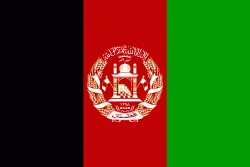Almar District (Almār)
Almar is a district in the southwestern part of Faryab Province, Afghanistan. Its northern border is the national border with Turkmenistan. The population was estimated at 150,000 in 2013. Ethnic diversity includes 35% Turkmen and 65% Uzbek.
The district centre is the ancient bazaar town of Almar, 35.8464°N, 64.5333°W (also known as Alaqadari-i-Almar or Almar Bazar). Located in a dry desert at an altitude of 847m, 35 km from Maimana, this town is a major supply centre for all the villages on the banks of the Band-i-Turkestan river.
From 24 April and 7 May 2014, flash flooding from heavy rainfall resulted in the destruction of public facilities, roads, and agricultural land. Assessment findings reported 84 families were affected, 700 livestock were killed, 45 gardens were damaged, and 37 Jeribs of agricultural land were damaged/destroyed.
On March 3, 2021, the district fell to the Taliban
The district centre is the ancient bazaar town of Almar, 35.8464°N, 64.5333°W (also known as Alaqadari-i-Almar or Almar Bazar). Located in a dry desert at an altitude of 847m, 35 km from Maimana, this town is a major supply centre for all the villages on the banks of the Band-i-Turkestan river.
From 24 April and 7 May 2014, flash flooding from heavy rainfall resulted in the destruction of public facilities, roads, and agricultural land. Assessment findings reported 84 families were affected, 700 livestock were killed, 45 gardens were damaged, and 37 Jeribs of agricultural land were damaged/destroyed.
On March 3, 2021, the district fell to the Taliban
Map - Almar District (Almār)
Map
Country - Afghanistan
 |
 |
| Flag of Afghanistan | |
Human habitation in Afghanistan dates back to the Middle Paleolithic era, and the country's strategic location along the historic Silk Road has led it to being described, picturesquely, as the ‘roundabout of the ancient world’. Popularly referred to as the graveyard of empires, the land has historically been home to various peoples and has witnessed numerous military campaigns, including those by the Persians, Alexander the Great, the Maurya Empire, Arab Muslims, the Mongols, the British, the Soviet Union, and most recently by a US-led coalition. Afghanistan also served as the source from which the Greco-Bactrians and the Mughals, amongst others, rose to form major empires. The various conquests and periods in both the Iranian and Indian cultural spheres made the area a center for Zoroastrianism, Buddhism, Hinduism, and later Islam throughout history.
Currency / Language
| ISO | Currency | Symbol | Significant figures |
|---|---|---|---|
| AFN | Afghan afghani | Ø‹ | 2 |
| ISO | Language |
|---|---|
| PS | Pashto language |
| FA | Persian language |
| TK | Turkmen language |
| UZ | Uzbek language |















